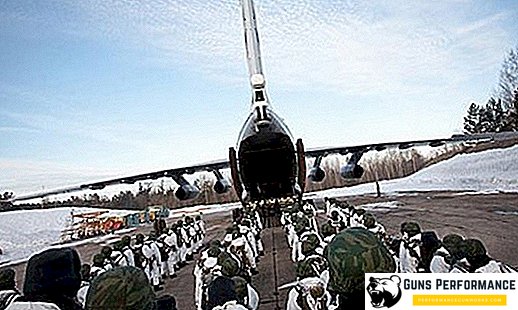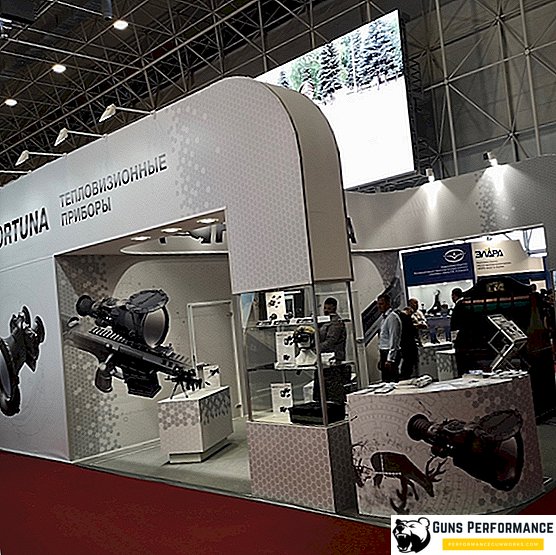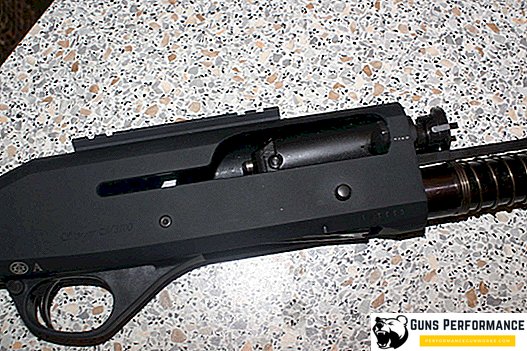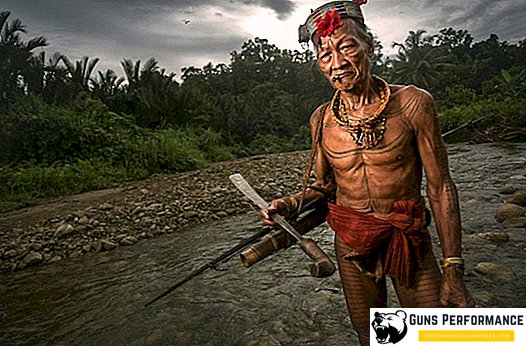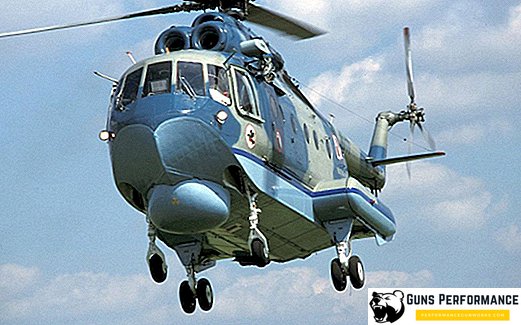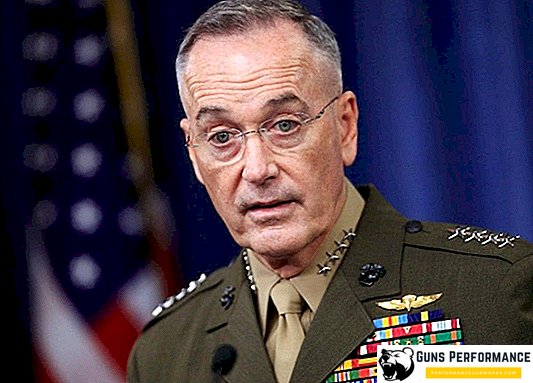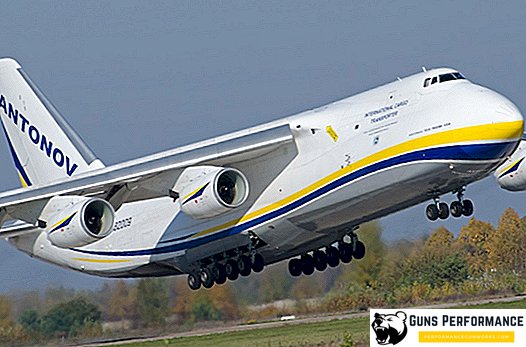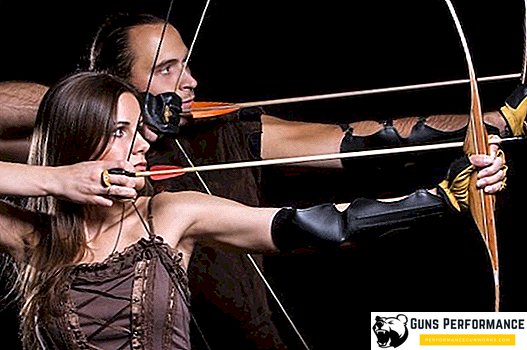
The airborne troops of the Russian Federation are a separate branch of the Russian armed forces, which is in reserve of the Commander-in-Chief of the country and is directly subordinate to the Commander of the Airborne Forces. At the moment this post is occupied (since October 2016) by Colonel-General Serdyukov.
The purpose of the airborne troops is to take action in the enemy's rear area, carry out deep raids, seize important objects of the enemy, bridgeheads, disrupt enemy communications and control of the enemy, conduct sabotage in his rear. The Airborne Forces were created primarily as an effective tool for an offensive war. To reach the enemy and act in his rear, the Airborne Forces can use parachute landing, both parachute and landing.
Airborne troops are rightfully considered the elite of the armed forces of the Russian Federation; in order to get into this type of military, candidates must meet very high criteria. First of all it concerns physical health and psychological stability. And this is natural: the paratroopers perform their tasks in the rear of the enemy, without the support of their main forces, bringing up ammunition and evacuating the wounded.
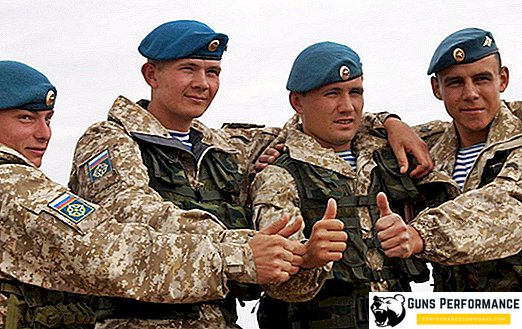
The Soviet Airborne Forces were created in the 30s, the further development of this type of troops was rapid: by the beginning of the war, five airborne corps were deployed in the USSR, with 10,000 people each. The Airborne Forces of the USSR played an important role in the victory over the Nazi invaders. The paratroopers actively participated in the Afghan war. The Russian airborne troops were officially established on May 12, 1992, they went through both Chechen campaigns and participated in the war with Georgia in 2008.
The flag of the Airborne Forces is a blue cloth with a green stripe at the bottom. In its center is an image of a golden parachute open and two planes of the same color. The flag was officially approved in 2004.
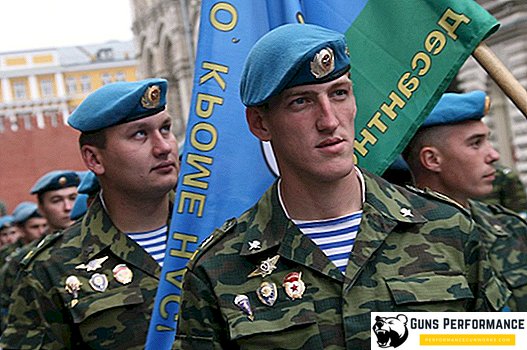
In addition to the flag, there is also the emblem of this kind of troops. This is a flaming grenada of golden color with two wings. There is also a medium and large emblem of the Airborne Forces. The middle emblem shows a two-headed eagle with a crown on its head and a shield with George the Victorious in the center. In one paw, an eagle holds a sword, and in the other, a flaming grenade of the Airborne Forces. On a large emblem, the grenada is placed on a blue heraldic shield framed with an oak wreath. In its upper part is a double-headed eagle.

In addition to the emblem and flag of the Airborne Forces, there is also the motto of the Airborne Forces: "Nobody but us." The paratroopers even have their heavenly patron, Saint Elijah.
Professional holiday paratroopers - Day Airborne. It is celebrated on August 2. On this day in 1930 a parachute landing of a subunit was made for the first time to perform a combat mission. On August 2, the Airborne Forces Day is celebrated not only in Russia, but also in Belarus, Ukraine and Kazakhstan.
The airborne troops of Russia are armed with both conventional types of military equipment and samples developed specifically for this type of troops, taking into account the specifics of its tasks.
It is difficult to name the exact number of the Airborne Forces of the Russian Federation, this information is secret. However, according to unofficial data obtained from the Russian Ministry of Defense, it is about 45 thousand fighters. Foreign estimates of the strength of this kind of troops are somewhat more modest - 36 thousand people.
The history of the Airborne
Homeland Airborne is the Soviet Union. It was in the USSR that the first airborne unit was created, this happened in 1930. At first a small detachment appeared, which was part of the usual rifle division. On August 2, the first parachute landing was successfully carried out during exercises at the range near Voronezh.
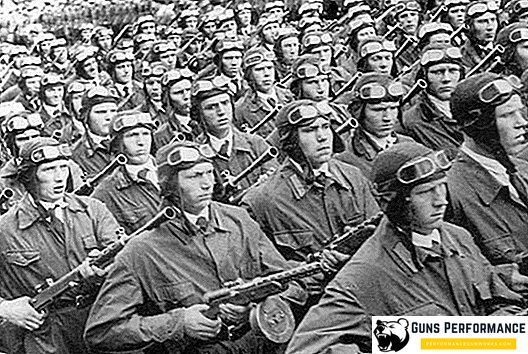
However, the first use of parachute assault in military affairs occurred even earlier, in 1929. During the siege by the anti-Soviet rebels of the Tajik city of Garm, a detachment of Red Army soldiers was parachuted there, which made it possible to unblock the settlement as soon as possible.
Two years later, a special brigade was formed on the basis of the detachment, and in 1938 it was renamed the 201st airborne brigade. In 1932, by the decision of the Revolutionary Military Council, special-purpose aviation battalions were created, in 1933 their number reached 29. They were part of the Air Force, and their main task was to disorganize the rear of the enemy and conduct sabotage.
It should be noted that the development of airborne troops in the Soviet Union was very rapid and rapid. They were not spared funds. In the 1930s, the country experienced a real parachute boom, the parachute towers stood in almost every stadium.
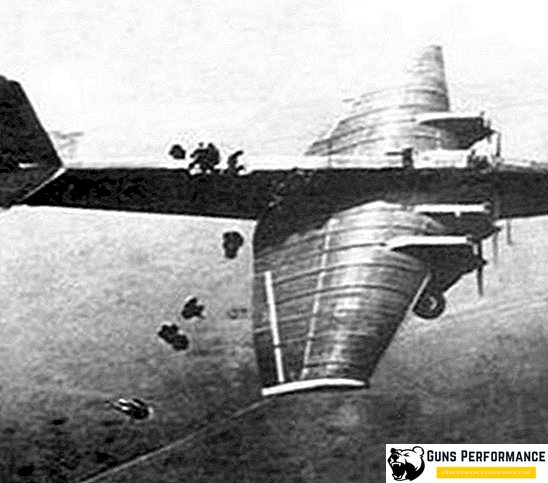
During the exercises of the Kiev Military District in 1935, for the first time, mass landing of an assault force was parachuted. The following year, an even more massive landing was carried out in the Belarusian Military District. Foreign military observers invited to the exercises were amazed at the scale of the landing forces and the skill of the Soviet paratroopers.
According to the Field Regulations of the Red Army of 1939, the airborne units were at the disposal of the high command, they were planned to be used to attack the enemy’s rear. At the same time, it was prescribed to coordinate such strikes with other branches of the troops, which at that moment delivered frontal strikes against the enemy.
In 1939, the Soviet paratroopers were able to acquire the first combat experience: the 212th Airborne Brigade took part in the battles with the Japanese at Khalkhin Gol. Hundreds of its fighters were awarded government awards. Several units of the Airborne Forces participated in the Soviet-Finnish war. The paratroopers were involved during the capture of Northern Bukovina and Bessarabia.
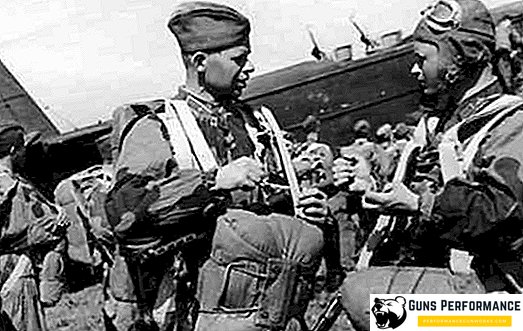
Before the beginning of the war, the airborne corps were created in the USSR; each of them consisted of up to 10 thousand fighters. In April 1941, by order of the Soviet military leadership, five airborne corps were deployed in the western regions of the country, and after the German attack (in August 1941), five more airborne corps were formed. A few days before the German invasion (June 12), the Office of the Airborne Forces was created, and in September 1941 the paratroopers' units were withdrawn from the command of the front commanders. Each corps of the Airborne Forces was a very formidable force: in addition to well-trained personnel, he was armed with artillery and light amphibious tanks.
In addition to the airborne corps, the Red Army also included mobile airborne brigades (five units), spare regiments of the Airborne Forces (five units), and educational institutions that trained paratroopers.
Airborne made a significant contribution to the victory over the Nazi invaders. The airborne units played a particularly important role in the initial, the most difficult, period of the war. Despite the fact that airborne troops are designed to conduct offensive operations and have a minimum of heavy weapons (compared to other branches of the military), at the beginning of the war, paratroopers were often used to "patch holes": in defense, to eliminate sudden German breakthroughs deblocking surrounded by Soviet troops. Because of this practice, paratroopers carried unnecessarily high losses, reducing the effectiveness of their use. Often, the preparation of landing operations left much to be desired.
Airborne units took part in the defense of Moscow, as well as in the subsequent counteroffensive. The 4th Corps of the Airborne Forces in the winter of 1942 was parachuted during the Vyazma landing operation. In 1943, during the crossing of the Dnieper, two airborne brigades were thrown into the enemy rear. Another major landing operation was carried out in Manchuria, in August 1945. In its course by landing method 4 thousand fighters were landed.
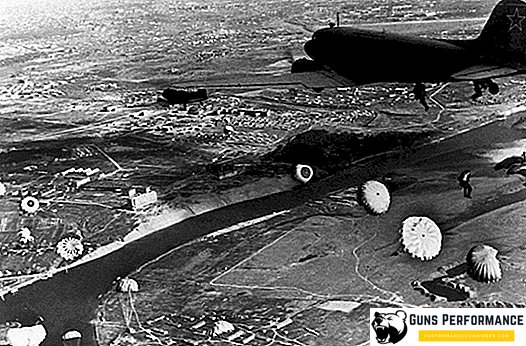
In October 1944, the Soviet Airborne Forces were transformed into a separate guards army of the Airborne Forces, and in December of the same year - into the 9th Guards Army. Airborne divisions turned into ordinary infantry divisions. At the end of the war, paratroopers participated in the liberation of Budapest, Prague, Vienna. The 9th Guards Army ended its glorious battle path on the Elbe.
In 1946, the landing units were introduced into the Ground Forces and were subordinate to the Minister of Defense of the country.
In 1956, Soviet paratroopers participated in the suppression of the Hungarian uprising, and in the mid-60s played a key role in pacifying another country that wanted to leave the socialist camp - Czechoslovakia.
After the end of the war, the world entered an era of confrontation between the two superpowers - the USSR and the USA. The plans of the Soviet leadership were by no means limited only to defense, therefore the airborne troops developed particularly actively during this period. Emphasis was placed on increasing the firepower of the Airborne Forces. For this purpose, a whole range of airborne equipment was developed, including armored vehicles, artillery systems, and motor vehicles. The fleet of military transport aviation was significantly increased. In the 70s, wide-bodied large-capacity transport aircraft were created, allowing to transport not only personnel, but also heavy military equipment. By the end of the 80s, the state of the USSR military transport aviation was such that it could provide parachute dropping by almost 75% of the personnel of the airborne forces in one flight.
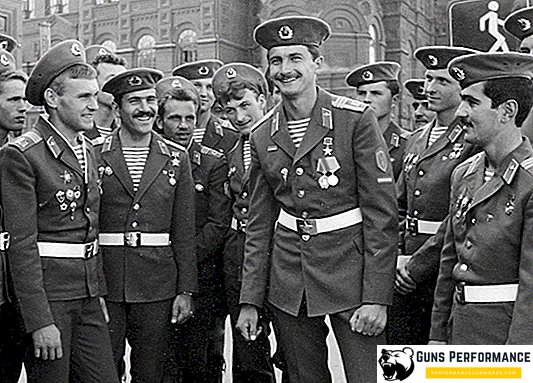
At the end of the 60s, a new type of units forming part of the Airborne Forces was created - airborne assault units (LFD). They were not much different from the other parts of the Airborne Forces, but they obeyed the command of groups of troops, armies or corps. The reason for the creation of the LPR was the change in tactical plans that were prepared by the Soviet strategists in case of a full-scale war. After the outbreak of the conflict, the enemy defense was planned to be “broken” with the help of massive assault forces landed in the immediate rear of the enemy.
In the mid-1980s, the USSR Ground Forces had 14 assault brigades, 20 battalions, and 22 separate assault regiments.
In 1979, the war began in Afghanistan, and the Soviet Airborne Forces took an active part in it. During this conflict, paratroopers had to engage in counter-guerrilla warfare, of course, there was no question of parachuting paratroopers. The delivery of personnel to the place of combat operations took place with the help of armored vehicles or vehicles, and landing was carried out from helicopters less often.
Paratroopers were often used for guarding at numerous outposts and roadblocks scattered throughout the country. Usually, the airborne units performed tasks more suitable for motorized rifle subunits.
It should be noted that in Afghanistan, paratroopers used ground combat vehicles, which were more suitable for the harsh conditions of this country than their own. Also, airborne units in Afghanistan were reinforced by additional artillery and tank units.
After the collapse of the USSR, the division of its armed forces began. These processes affected the paratroopers. The Airborne Forces were finally able to separate only by 1992, after which the Airborne Forces of Russia were created. They included all the units that were located in the territory of the RSFSR, as well as part of the divisions and brigades that had previously been located in other republics of the USSR.
In 1993, the Airborne Forces of the Russian Federation consisted of six divisions, six assault assault brigades and two regiments. In 1994, in the Kubinka near Moscow, on the basis of two battalions, the 45th special purpose regiment of the Airborne Forces (the so-called special forces of the Airborne Forces) was created.
The 90s became a serious test for the Russian airborne troops (as well as for the whole army). The number of airborne troops was seriously reduced, part of the units was disbanded, paratroopers became subordinate to the Ground Forces. Army aircraft was transferred to the air force, which significantly worsened the mobility of the airborne forces.
The airborne troops of the Russian Federation took part in both Chechen campaigns, in 2008 the paratroopers were involved in the Ossetian conflict. Airborne forces have repeatedly taken part in peacekeeping operations (for example, in the former Yugoslavia). Airborne unit regularly participate in international exercises, they protect the Russian military bases abroad (Kyrgyzstan).
The structure and composition of the airborne troops of the Russian Federation
Currently, the RF Airborne Forces consist of command and control structures, combat units and units, as well as various institutions that provide them.
Structurally, the Airborne Forces have three main components:
- Airborne. It includes all airborne units.
- Assault assault. It consists of airborne assault units.
- Mountain. It includes airborne assault units designed to operate in mountainous terrain.
Currently, the division of the Airborne Forces of the Russian Federation consists of four divisions, as well as separate brigades and regiments. Airborne troops, composition:
- 76th Guards Air Assault Division, the location of Pskov.
- 98th Guards Airborne Division, located in Ivanovo.
- 7th Guards Airborne Assault (Mountain) Division, place of deployment - Novorossiysk.
- 106th Guards Airborne Division - Tula.
Regiments and airborne brigades:
- The 11th Separate Guards Airborne Brigade, the place of deployment is the city of Ulan-Ude.
- The 45th Separate Guards Special Task Brigade (Moscow).
- 56th Separate Guards Air Assault Brigade. Place of dislocation - the city Kamyshin.
- 31st Separate Guards Air Assault Brigade. Located in Ulyanovsk.
- 83rd Separate Guards Airborne Brigade. Location - Ussuriysk.
- The 38th separate guard regiment of communications of the Airborne Forces. Located in the Moscow region, in the village of Bear Lakes.
In 2013, the 345th Air Assault Brigade in Voronezh was officially announced, but then the formation of the unit was postponed to a later date (2017 or 2018). There is information that in 2018 an air assault battalion will be deployed on the territory of the Crimean peninsula, and in the future a regiment of the 7th air assault division will be formed at its base, which is now deployed in Novorossiysk.
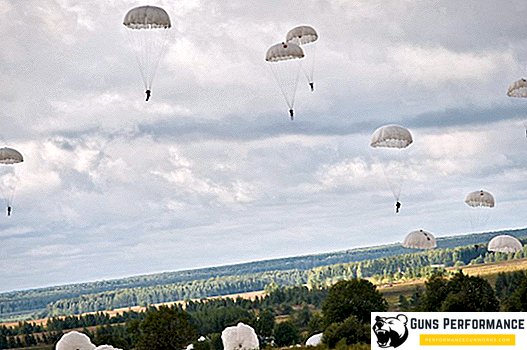
In addition to combat units, the Russian Airborne Forces also include educational institutions that train personnel for the Airborne Forces. The main and most famous of these is the Ryazan Higher Airborne Command School, which also trains officers for the Russian Airborne Forces. Also in the structure of this kind of troops are two Suvorov schools (in Tula and Ulyanovsk), the Omsk Cadet Corps and the 242nd Training Center, located in Omsk.
Armament and equipment of the Airborne Forces of Russia
The airborne troops of the Russian Federation use both combined-arms technology and samples that were created specifically for this type of troops. Most types of weapons and military equipment of the Airborne Forces was developed and manufactured in the Soviet period, but there are more modern models created in modern times.
The most massive examples of armored vehicles of the Airborne Forces are currently the BMD-1 airborne combat vehicles (about 100 units) and the BMD-2M (about 1,000 units). Both of these cars were produced in the Soviet Union (BMD-1 in 1968, BMD-2 in 1985). They can be used for landing in both landing and parachute way. These are reliable vehicles that have been tested in many armed conflicts, but they are clearly outdated, both morally and physically. This is openly declared even by representatives of the top leadership of the Russian army.
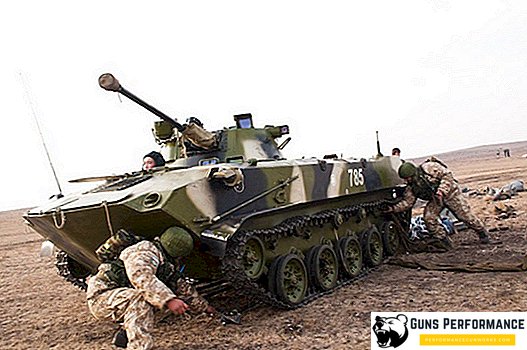
More modern is the BMD-3, the operation of which began in 1990. Currently, 10 units of this combat vehicle are in service. Mass production is discontinued. BMD-3 should replace BMD-4, which was put into service in 2004. However, its production is slow, today there are 30 units of the BMP-4 and 12 units of the BMP-4M in service.
Also, the Airborne Forces have a small number of armored personnel carriers BTR-82A and BTR-82AM (12 pieces), as well as the Soviet BTR-80. The most numerous armored personnel carrier currently used by the RF Airborne Forces is a tracked BTR-D (over 700 units). It was adopted in 1974 and is very obsolete. It should be replaced by the BTR-MDM "Shell", but so far its production is moving very slowly: today, in front-line units from 12 to 30 (according to different sources) are "Shells".
The anti-tank armament of the Airborne Forces is represented by the Sprut-SD self-propelled 2S25 anti-tank gun (36 units), the BTR-RD Robot self-propelled anti-tank complexes (more than 100 units) and a wide range of various ATGMs: Metis, Fagot, Konkurs and "Cornet".
The airborne forces of the Russian Federation are equipped with self-propelled and towed artillery: the self-propelled gun "Nona" (250 pieces and several hundreds more in storage), the D-30 howitzer (150 units), and the "Nona-M1" mortars (50 units) and "Tray" (150 units).
Airborne defense equipment consists of portable missile systems (various modifications of the "Needles" and "Verba"), as well as air defense systems of the short-range "Strela". Отдельное внимание следует уделить новейшему российскому ПЗРК "Верба", который только недавно был принят на вооружение и сейчас он поставлен на опытную эксплуатацию только в несколько частей ВС РФ, в том числе и в 98-ю дивизию ВДВ.
На эксплуатации в ВДВ также находятся самоходные зенитные артиллерийские установки БТР-ЗД "Скрежет" (150 единиц) советского производства и буксируемые зенитные артиллерийские установки ЗУ-23-2.
В последние годы в ВДВ начали поступать новые образцы автомобильной техники, из которых следует отметить бронеавтомобиль "Тигр", вездеход Снегоход А-1 и грузовой автомобиль КАМАЗ-43501.
Воздушно-десантные войска достаточно укомплектованы системами связи, управления и радиоэлектронной борьбы. Среди них следует отметить современные российские разработки: комплексы РЭБ "Леер-2" и "Леер-3", "Инфауна", систему управления комплексами ПВО "Барнаул", автоматизированные системы управления войсками "Андромеда-Д" и "Полет-К".
На вооружении войск ВДВ стоит широкая номенклатура стрелкового оружия, среди которого есть как советские образцы, так и более новые российские разработки. К последним относится пистолет Ярыгина, ПММ и бесшумный пистолет ПСС. Основным личным оружием бойцов остается советский автомат АК-74, однако уже начались поставки в войска более совершенного АК-74М. Для проведения диверсионных заданий десантники могут использовать бесшумный автомат "Вал".
На вооружении ВДВ находятся пулеметы "Печенег" (Россия) и НСВ (СССР), а также крупнокалиберный пулемет "Корд" (Россия).
Среди снайперских комплексов следует отметить СВ-98 (Россия) и "Винторез" (СССР), а также австрийскую снайперскую винтовку Steyr SSG 04, которая была закуплена для нужд спецподразделений ВДВ. На вооружении десантников стоят автоматические гранатометы АГС-17 "Пламя" и АГС-30, а также станковый гранатомет СПГ-9 "Копье". Кроме этого, используются целый ряд ручных противотанковых гранатометов как советского, так и российского производства.
Для проведения воздушной разведки и корректировки артиллерийского огня войска ВДВ используют беспилотные летательные аппараты "Орлан-10" российского производства. Точное количество "Орланов", находящееся на вооружении ВДВ, неизвестно.
Воздушно-десантные войска РФ используют большое количество различных парашютных систем советского и российского производства. С их помощью проводится десантирование как личного состава, так и военной техники.
